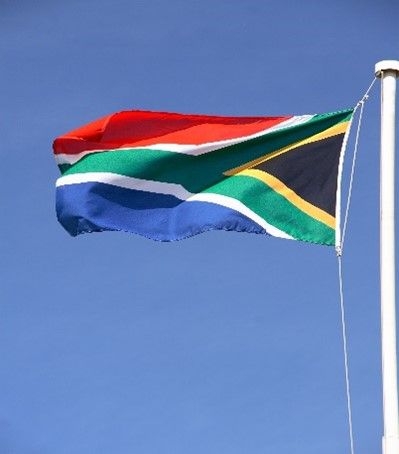- within Accounting and Audit, Law Department Performance and Consumer Protection topic(s)
There's been an interesting UK court decision dealing with breach of confidence: Clearcourse Partnership and others v Jethwa (2022). In this case, a party involved in a business sale heard and used information that he was not supposed to hear.
The facts
Clearcourse was instructed to handle the sale of a company of which Mr Jethwa was the part-owner and then CEO. Two directors of Clearcourse had a meeting with Mr Jethwa at his offices, in a conference room that was monitored by CCTV. At one point, Mr Jethwa left the room and went to his own office next door. While Mr Jethwa was out of the room, the two Clearcourse directors had what is described in the judgment as an "unguarded and candid" discussion. They discussed their strategy for the negotiations and their views on Mr Jethwa, predicting that he would probably be fired if the transaction went ahead.
Mr Jethwa heard it all, and although he claimed that what he heard came through the wall rather than through the CCTV footage, he did take a screenshot of the footage. Mr Jethwa said nothing of what he had heard to the Clearcourse directors, apparently because he wanted the deal to go ahead.
The sale was concluded but a dispute subsequently arose. Mr Jethwa then sent Clearcourse the screenshot, adding these words: "You should know this doesn't do you any favours...what you both say should be interest for social [sic]." Clearcourse interpreted this as a threat to disclose what had been discussed privately on social media, and brought an action in the High Court seeking an interim non-disclosure order.
Breach of confidence
Clearcourse alleged breach of confidence. The judge accepted that Mr Jethwa's screenshot and message was a threat and he found in the company's favour. The judge said that to succeed with a breach of confidence claim you need to establish three things, namely that:
- the discussion had the necessary quality of confidence;
- the defendant came to know of what was being said in circumstances importing an obligation of confidence; and
- there had been unauthorised use, or a threat to use, that information to the detriment of the owner of the information
The judge found that the requirements had been met, saying "there is no reason why a person overhearing a private discussion through a window or a wall, and who is aware of the context and private nature of the discussion, should not come under a duty of confidence. The fact that he makes no specific effort to eavesdrop is not determinative in this regard."
Misuse of private information
The judge accepted this claim too, saying that Clearcourse "would regard their conversation, behind closed doors, as giving rise to a reasonable expectation of privacy". The judge said that there was no general interest or justification for its disclosure.
South Africa
It's worth noting that South African law would also offer a remedy in a case like this, under the general ground of unlawful competition.
THEFT: HERALDRY

Image source: unsplash
Heraldry is a rather obscure area of the law that is loosely linked to IP. We don't get to write about it much.
The SA flag
When South Africa became a democracy in 1994, the old flag was replaced with the "horizontally oriented Y-shape flag" that comprises six colours: blue, green, black, white, yellow and red. It's always been accepted that the flag was created by Harold Frederick Brownell, a man who was the State Herald at the National Archives for the period 1982 – 2002.
Alleged theft
There is now a claim that the design for the South African flag was stolen. Thembani Hastings Mqhayi, a manager at the Eastern Cape Department of Arts and Culture, claims that he submitted five potential designs for the new flag to the Department of Sport, Arts and Culture in 1994. The suggestion is that Mr Brownell, who was part of the committee that made the final decision, took Mr Mqhayi's designs and submitted them as his own. Mr Mqhayi has filed an action at the Gauteng High Court in Pretoria, citing Sports, Arts and Culture Minister Nathi Mthethwa as the First Respondent and the State Herald as the Second Respondent.
The claims
Mr Mqhayi alleges that Minister Mthethwa failed to disclose pertinent information about the creation of the flag, and that a request made under the Promotion of Access to Information Act, 2000, in July 2021 was ignored. He is seeking a great deal of information about how the flag was created, including:
- the identities and capacities of all those who made up the committee;
- minutes of meetings about the designs;
- details of all those who submitted designs;
- details regarding the selection process; and
- the committee's final recommendation that was sent to the President for approval
Unfortunately, Mr Brownell can't be consulted because he died in 2019. It will be interesting to see how this matter plays out.
Ignorance: Denel
According to recent news reports, the arms company Denel sold intellectual property relating to the RG35 armoured vehicle's developed version, the N35, to a company called NIMR – a subsidiary of UAE government-linked Tawazun. This sale occurred in 2015 and the purchase price was USD16-million (ZAR208-million at the time of writing). Reports suggest that if Denel had not sold this IP, it could have earned some ZAR480-million in the period 2013-2018. More worryingly, the report says that projections for the N35 vehicle for the period 2015 -2021 were some ZAR4.1-billion.
The news reports are vague. But what the story certainly does do is highlight the need for proper IP valuation, and an understanding of the value of IP and the revenue it can generate. This is particularly important in the context of mergers and acquisitions, where the target company's IP may be sold to the acquirer as part of the merger, or sold separately to a third party (which could significantly affect the target's value to the acquirer).
The content of this article is intended to provide a general guide to the subject matter. Specialist advice should be sought about your specific circumstances.


